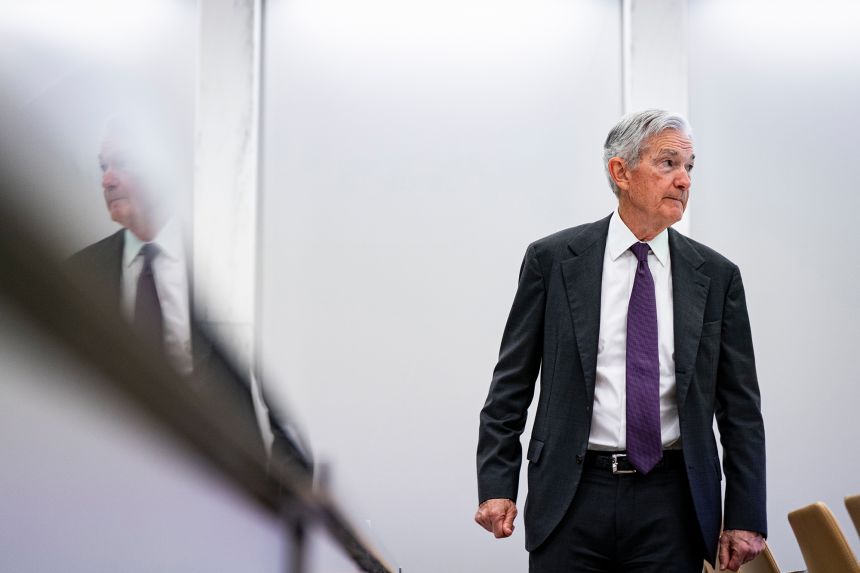Washington
—
Sweeping changes are coming to the world’s most powerful central bank, President Donald Trump and his top advisers have said — and they’re already starting to make good on that promise.
Treasury Secretary Scott Bessent last week made it clear that the Trump administration intends to shake up the Federal Reserve — just as it has done with the rest of the federal government.
Change at the central bank will accelerate once Chair Jerome Powell steps aside at the end of his term in May 2026 — or earlier if he resigns or Trump manages to fire him. Those changes include the rules that impact the largest US banks, which are already being reviewed, and on the Fed’s workforce of tens of thousands across the country.
“What we need to do is examine the entire Federal Reserve institution and whether they have been successful,” Bessent told CNBC on July 21. “All these PhDs over there, I don’t know what they do.”
“This is like universal basic income for academic economists,” he said.
In June, Trump began to etch the legacy of his second term on the Fed by elevating Michelle Bowman to lead banking regulation as a vice chair on the central bank’s Board of Governors. She had been a member of the board since 2018.
A cornerstone of Trump’s economic agenda is to slash regulations, and Bowman is widely expected to deliver on that goal when it comes to the banking industry. She has already begun to do exactly that: The Fed is in the process of revisiting and easing a raft of banking rules that came about in the aftermath of the global financial crisis of 2008.
For example, the Fed last month — after Bowman assumed her new role — proposed an overhaul of how much buffer global banks must have against their total leverage, or assets that carry some risk, such as loans and Treasury holdings. The board approved the proposal in late June.
The nation’s largest banks cheered the decision, arguing that it will allow them to lend more to businesses and consumers. But critics say the overhaul “puts our banking system at risk by weakening capital of the largest banking organizations,” Fed Governor Michael Barr, who led banking regulation before Bowman, said after the proposal was approved.
Reconfiguring banking rules was the focus of a day-long conference Bowman spearheaded last week at the Fed’s headquarters in Washington, DC. By the end of the event, one thing was clear: The banking industry wants simpler regulation, and the Fed is now poised to deliver with Bowman in a key leadership role.
“Thirty-five years ago, the capital rules were simple and weak, and today they are complex and strong,” Mike Mayo, a Wells Fargo research analyst, said at a panel discussion at the event. “Let’s make them simpler and strong.”
Downsizing the Fed’s workforce and trimming spending
The Fed is already moving to trim headcount, but Trump officials have suggested that won’t be enough.
In May, Powell sent a memo to the central bank’s roughly 24,000 employees announcing plans to reduce its workforce by 10% in the coming years, citing “government-wide efforts to improve efficiency.” Fed employees are employed at regional banks across the country, with about 3,000 based in Washington, DC.
Powell’s announcement came after various government institutions went through staffing overhauls by the Trump administration this year.

But recent comments suggest the White House is looking for even more cuts to the Fed. Bessent has called for a more aggressive downsizing and Kevin Warsh, a former Fed governor seen as a potential choice to succeed Powell, told Fox Business in a July 7 interview that there’s “plenty of deadwood” at the central bank.
Since mid-2022, the Fed has operated at a loss of more than $220 billion because it raised interest rates aggressively to tamp down high inflation, raising the interest costs tied to the debt holdings on its portfolio. Bessent frequently points to those losses in his criticism of the Fed.
The Trump administration’s criticism of the Fed’s $2.5 billion renovation project — which the president seems to have backed off from after his Thursday tour — is also indicative that administration officials view the central bank as an excessive spender.
Conducting mass layoffs at the Fed, however, may not be so simple, according to Bill English, a former senior Fed adviser.
“The chair has the authority to dismiss senior staff at the board, but to do a broader downsizing of the institution would require a vote of the board,” English told CNN. “The new chair may want to do that, but it’s hard to say how seriously the other board members would want to change the institution.”

